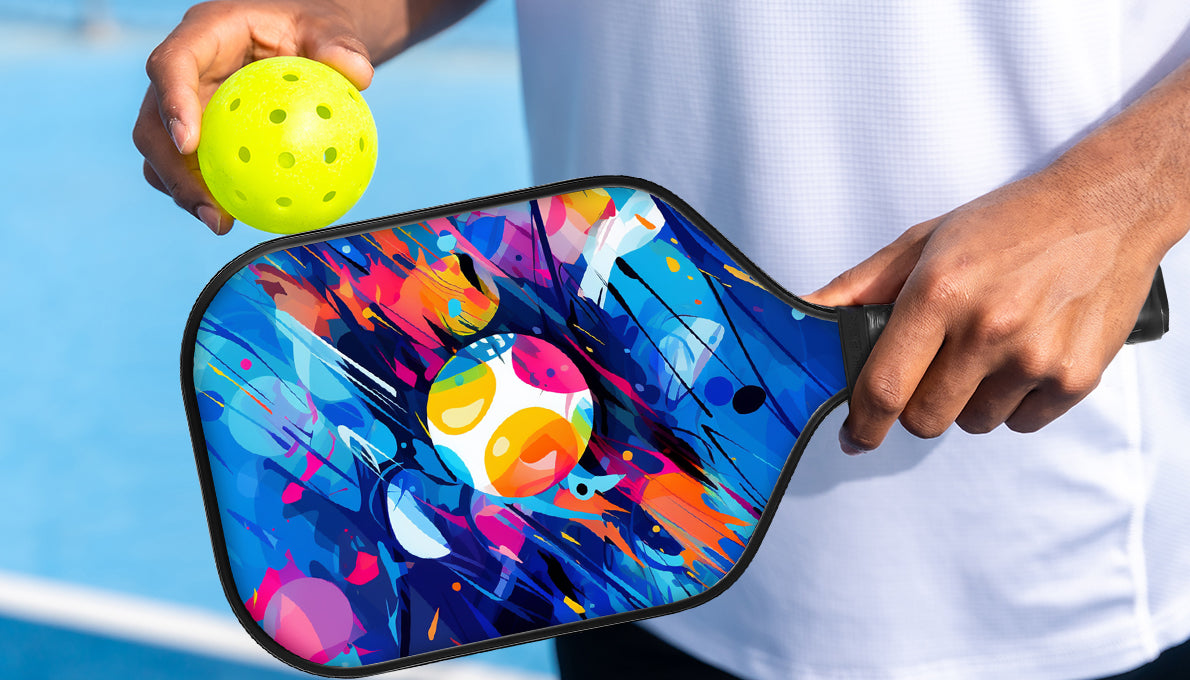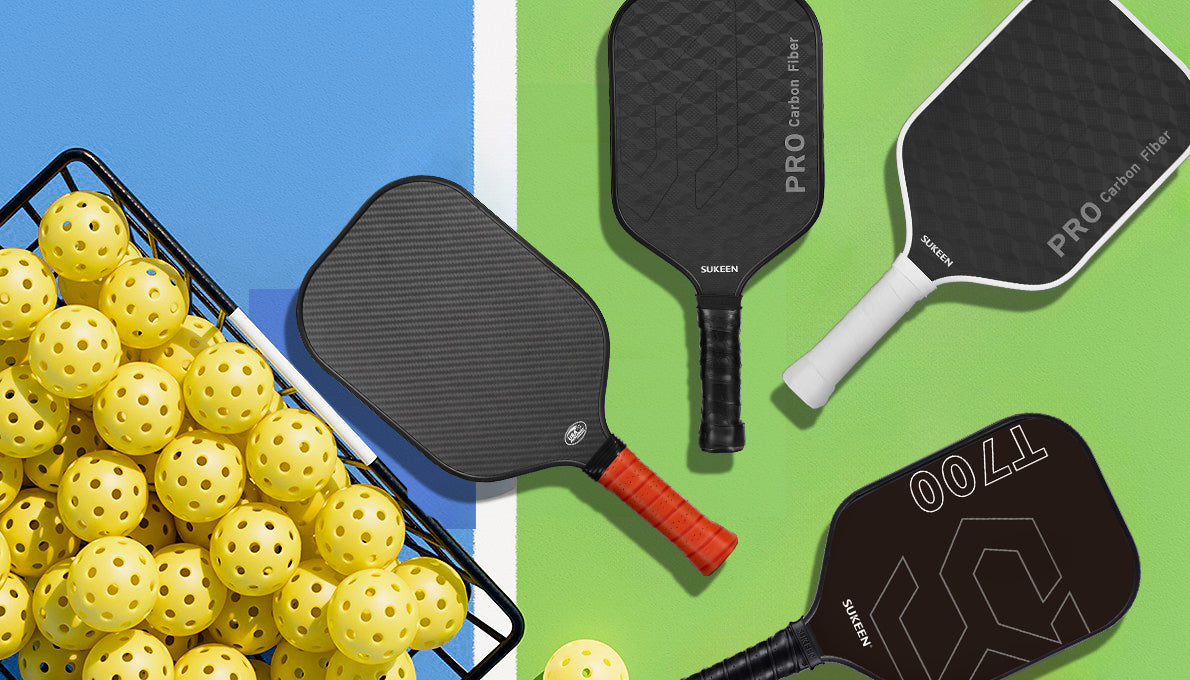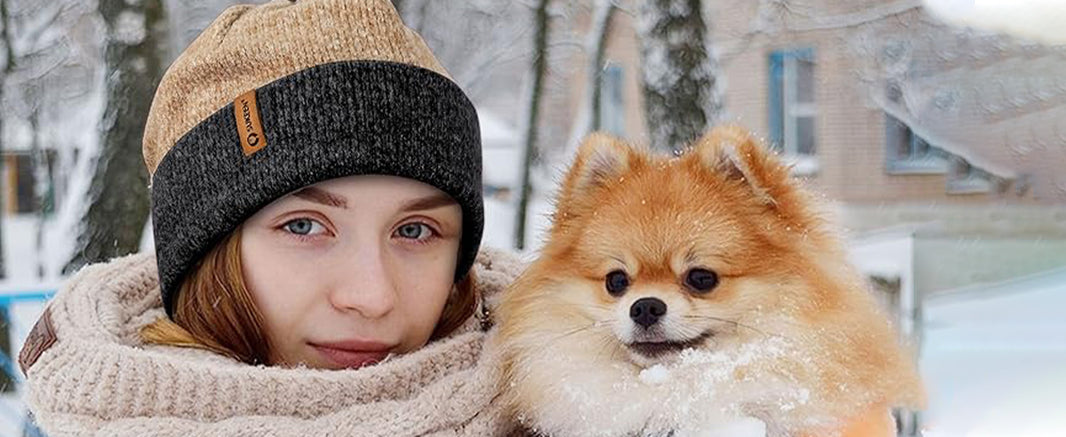What is the Beanie?
Ⅰ. Origin and History of BeanieⅡ. Modern Beanie Use
Ⅲ. Beanie Material Classification
Ⅳ. Types of Beanie
Ⅴ. How to Choose a Beanie that Suits You
Ⅵ. How to Maintain Beanie
Ⅰ. Origin and History of Beanie
Beanie was first used by the working class in Europe. This hat originated in Europe and was gradually introduced to North America, becoming one of the iconic outfits of blue-collar workers and fishermen. In order to work for long hours in cold weather and resist low temperatures and cold winds, workers needed a hat that was both warm and did not hinder work. This was the original reason for the emergence of beanie.
After World War II, beanie began to appear in the fashion trend of young people. Beanie gradually surpassed its original functionality and became a symbol of society and culture. It was regarded as a symbol of rebellion and individuality, and was especially popular in hippie culture and skateboard culture. Young people expressed their personality and attitude towards life through beanie of different colors and styles. This period made beanie not only a hat, but also a part of youth culture. Many musicians, artists and athletes also began to wear beanie, making it a fashion statement, further promoting the status of beanie in popular culture.
The design and function of modern beanie have evolved again, becoming an important fashion item. Modern beanies not only take warmth into consideration, but also incorporate a variety of materials, colors, and styles. Designers began to experiment with different patterns and weaving methods, making beanies not only limited to cold winter wear, but many styles are also suitable for spring and autumn or daily wear.
SUKEEN's beanie series combines traditional design with modern elements, providing a variety of options to meet the needs of different outdoor sports enthusiasts. Whether it is skiing, hiking, or daily urban life, beanies can provide users with a dual experience of fashion and comfort.
Ⅱ. Modern Beanie Use
1. Use in outdoor sports
The importance of beanies in outdoor sports cannot be ignored. Make full use of the warmth and comfort advantages of beanies when doing various outdoor activities to ensure that your sports experience is more enjoyable and safe.
Skiing and snowboarding: beanies provide an extra layer of warmth in tightly wrapped ski equipment, and can be easily used with helmets. Due to the extremely low temperatures in the alpine environment, beanies can help athletes keep their heads warm and avoid body heat loss. Choosing a beanie with moisture wicking function can help manage sweat and keep your head dry. This is especially important in high-intensity skiing to avoid discomfort or coldness caused by moisture.
Pickleball Outdoor Sports: In cold weather, many pickleball enthusiasts still choose to train or compete on outdoor courts. Compared with other outdoor sports, the fast movement and high-intensity physical exertion of pickleball means that athletes need to maintain flexible body temperature management. Wearing a beanie can not only effectively resist cold wind and help lock in body temperature, but also does not affect flexibility during exercise. Especially in the cold autumn and winter seasons, beanies can be combined with sports headbands or ear protection equipment to add extra warmth and keep the head dry. For outdoor pickleball games, a high-performance beanie is not only a guarantee of warmth, but also a key equipment to improve comfort. If you are also interested in pickleball, you can read the previous content!Why does Everyone Fall in Love with Pickleball?
For outdoor sports enthusiasts, SUKEEN's beanie series provides high-performance warmth and breathability, adapting to various extreme climate conditions, ensuring comfort and safety during activities. Regarding safety, Sukeen has a baseball cap with an anti-collision inner shell to better protect the safety of outdoor athletes. Knowing more about Sukeen's Outdoor Sports Hats can help you choose the most suitable style.
2. Fashion and personality expression
In addition to functionality, beanie also occupies a place in the fashion field. Modern beanie is not only a warm-keeping tool, it has become a popular fashion item.
a). Street style
On the streets of the city, beanie is often matched with various casual wear and has become part of the trend. Many fashion gurus and bloggers show their personal style and taste through beanie of different colors and patterns.
b). Art and music world
Many artists and musicians use beanie as part of their personal image, giving it a unique cultural and artistic sense. This hat is common in music festivals, concerts and exhibitions, and has become an important element of expressing personality and creating style.
c). Fashion matching
In fashion matching, beanie can add layering and fun to the overall look. Whether it is a simple black beanie or a colorful design, they can be perfectly integrated with various clothing styles.
For users who pursue individuality and fashion, SUKEEN provides a variety of uniquely designed beanie styles, keeping up with fashion trends, helping you show your style in any occasion. More selection guides for fashionable beanie can help you find the perfect fashion item.
3. Home comfort
In the home environment, beanie can also provide comfort and warmth.
Family activities: In the cold winter, beanie can provide extra warmth for the family. Whether watching TV on the sofa or doing housework at home, beanie can keep you comfortable.
Leisure and relaxation: When you are relaxing at home, beanie can increase the atmosphere of relaxation as a comfortable accessory. Its soft material makes it comfortable to wear and suitable for wearing at home at any time.
For people who pay attention to home comfort, SUKEEN's beanie series provides high-quality soft fabrics and comfortable designs, making family life more comfortable and pleasant. Knowing more about the recommendations of home comfort beanie can help you choose the most suitable style.
Ⅲ. Beanie Material Classification
1. Acrylic
Acrylic is a synthetic fiber made of polyacrylonitrile. This fiber was first developed in the 1950s and is widely used in various textiles.
a). Warmth
Acrylic fiber can effectively capture air through its special structure to form an insulating layer, thereby reducing heat loss. Although acrylic is slightly inferior to natural materials such as wool in terms of warmth, its lightness allows it to provide sufficient insulation in warm weather and outdoor activities in spring and autumn.
b). Durability
Specially processed acrylic fibers show excellent wear resistance, strong tear resistance, and are not easy to deform or shrink. This excellent durability ensures that acrylic beanies can withstand the test of daily wear and various outdoor sports.
2. Wool
Wool is a natural fiber obtained from sheep's hair. Its history can be traced back thousands of years and is one of the oldest textile materials.
a). Excellent warmth retention
The natural curl structure of wool forms fine air barriers that help to effectively capture and retain body heat. At the same time, wool has excellent moisture regulation, which can quickly absorb and release moisture from the body surface to keep dry and warm. This makes wool beanie perform well in cold environments and provide excellent insulation.
b). Good breathability
The surface of wool fibers has tiny hair scales, which are arranged like overlapping fish scales, making wool naturally breathable. This structure can help regulate body temperature and prevent overheating.
High-quality wool fibers are very soft, do not irritate the skin, and feel comfortable to wear. This comfort is also one of the important reasons why people choose wool materials. They are obsessed with the comfortable and warm feeling to deal with the invasion of cold air.
3. Core-Spun Yarn
Core-Spun Yarn has a unique structure in which the core fiber is wrapped in an outer layer of softer fibers. Usually, the core is made of a strong fiber such as nylon, while the outer layer is made of a more comfortable material such as cotton or propylene.
a). Superior Durability
The presence of the core fiber significantly increases the wear resistance and strength of the core-spun yarn. This core component ensures that the yarn can withstand heavy use and resist wear damage, making it very durable.
b). Enhanced Comfort
The outer layer of soft fiber adds a layer of comfort, making the beanie comfortable to wear while still benefiting from the sturdiness of the core. This combination ensures a comfortable experience without sacrificing durability.
4. Polyester
Polyester is a synthetic fiber made from polyester that is widely used in a variety of textiles due to its superior properties. Polyester fiber is known for its excellent water resistance and can effectively block moisture penetration, making it ideal for use in wet or rainy environments. In addition, it has excellent quick-drying properties, allowing polyester beanies to quickly return to dryness and remain comfortable after high-intensity activities.
5. Cotton
Cotton beanies are made from natural cotton fibers, which come from the seed fluff of the cotton plant and are widely used in a variety of clothing.
a). Comfort
Cotton fiber is very soft, fits the skin, and provides an excellent wearing feeling. This comfort comes from the natural softness of cotton fiber, which makes the wearer feel comfortable and natural.
b). Breathability
The structure of natural fiber can promote air circulation, good breathability, can effectively wick sweat and keep the head dry. It is skin-friendly and environmentally friendly.
Cotton beanie is suitable for warm weather and daily wear. It is very suitable for spring and autumn seasons, and is also suitable for home leisure and urban travel. For occasions that require high comfort and breathability, cotton beanie is a good choice.
For a discussion on beanie materials, please read the reference beanie material selection.
Ⅳ. Types of Beanie
Depending on different usage scenarios and design styles, beanie has many different types. Here are some common beanie styles:
1. Classic Beanie
The classic beanie usually has a foldable cuff and is shaped like a simple dome without a complex structure. It is designed to fit tightly to the head and provide basic warmth. The length of the hat can be adjusted as needed. The cuffs can be folded over the ears or unfolded for more coverage.
You can also place the hat naturally on your head without folding the cuffs, which will make the hat slightly looser and create a natural pleated effect.
2. Loose-Fit Beanie
Loose-Fit beanies are usually worn lower on the head and are larger than classic beanies, with a looser overall shape. The hat forms natural pleats on the head, making the overall look more casual. The hat can be worn lower to naturally cover the ears, or slightly raised to create different looks.
3. Pom-Pom Beanie
The most notable feature of the pom-pom beanie is the small pom-pom on the top. The hat itself is usually similar to the classic beanie, but the top decoration adds a unique visual effect. When wearing it, center the pom-pom on the top naturally to ensure the overall balance and beauty of the hat. The hat can be tilted slightly so that the pom-pom is on the edge of the hat to add a personalized style.
4. Cuffed Beanie
The main feature of the cuffed beanie is that it has an extra layer of fabric on the edge that can be folded or unfolded to adjust the length and warmth of the hat. Adjust the cuff to the appropriate length for weather conditions and personal comfort. The cuff can be unfolded for more coverage or folded to adjust the warmth of the hat.
The hat can be worn higher to show the cuff, or worn lower for added warmth.
5. Fisherman Beanie
The hat is adjusted to be worn above the ears to keep it short. Since the hat is shorter, it can be naturally kept on the top of the head.
The position of the hat can be slightly adjusted to keep the hat casual and comfortable.
6. Beanie with Brim
The beanie with Brim features a brim-like part on the top, similar to the design of a traditional hat. The brim is naturally displayed when worn to provide additional protection. The brim can be adjusted forward or to the side to accommodate different protection needs. You can wear the hat slightly lower on your head so that the brim provides additional shade and prevents direct sunlight from hitting your eyes.
Different types of beanies are suitable for different occasions. If you are still undecided, you can refer to how to choose a beanie that suits your style to help you make the right choice.
Ⅴ. How to Choose a Beanie that Suits You
Choosing a beanie that suits you mainly considers the following aspects:
1. Material
When choosing a beanie, it is very important to understand the wearing experience and potential problems of different materials. Here is a detailed introduction to the material and the points to avoid:
a). Wool
It is a common material for high-quality beanies. Its advantages include excellent warmth retention and good breathability. Wool can effectively keep warm, especially providing comfort in cold weather. However, some pure wool beanies may cause itching on sensitive skin. To avoid this discomfort, you can choose blended wool, or choose a specially treated wool style.
b). Acrylic
It is another common beanie material with the advantages of wear resistance and affordable price. High-quality acrylic beanies usually have good elasticity and comfort, suitable for daily wear. However, low-quality acrylic materials may appear rough, uncomfortable to wear, and may even feel itchy. In addition, this material has poor warmth retention in cold weather and may not be breathable enough, which can easily cause dampness inside the hat. Low-quality acrylic beanies are also prone to pilling and deformation, affecting appearance and lifespan.
c). Cotton
Beanies are soft and comfortable, suitable for spring and autumn. Cotton beanies are breathable and suitable for warm weather. However, they are not warm enough and are not suitable for cold weather. In addition, cotton materials may easily deform and wear, and require special care to maintain their shape.
d). Blend
The material combines the advantages of different fibers and usually strikes a balance between comfort, durability and warmth. Blended beanies are generally more comfortable and suitable for all weather conditions. However, it should be noted that the mixing ratio of different fibers will affect its final comfort and functionality, so when choosing, choose the right style according to personal needs and usage scenarios.
When choosing a beanie, make sure to choose high-quality materials for the best wearing experience. Avoiding low-quality acrylic beanies will help you avoid common comfort issues such as roughness, poor warmth retention, and pilling. Choosing reputable brands and well-treated materials will help you find a comfortable and durable beanie.
2. Size selection
Measure your head circumference: Use a tape measure to measure the circumference of your head at its widest point. Generally, an adult head size between 22-23 inches (56-60 cm) will fit most standard beanies. Accurate size helps you choose the right hat.
Elasticity and adjustability: Many beanies are elastic and can adapt to different head sizes. Make sure the selected beanie has enough stretch to provide a comfortable fit. If the hat has an adjustable feature (such as a foldable brim), this is also a plus.
The right size ensures that the beanie fits the head evenly, avoiding pressure caused by being too tight or slipping off due to being too loose. The right size beanie can effectively cover the ears and forehead, provide sufficient warmth, and lock in body temperature to prevent heat loss. In terms of appearance, the right size beanie can better show personal style and avoid appearing bulky or uncoordinated. In addition, the right size beanie can be firmly fixed on the head, reducing the trouble of frequent adjustments and improving practicality.
Ⅵ. How to Maintain Beanie
Regular cleaning and maintenance can prevent dirt, sweat and grease from accumulating on the beanie material, thereby avoiding damage and extending its service life. Proper maintenance can maintain the color and shape of the beanie, prevent fading, pilling or deformation, and ensure that it always maintains its good appearance and use condition.
Wool hats require special attention when washing. It is recommended to hand wash with warm water and wool-specific detergent, and avoid hot water and high temperature for fast drying to prevent deformation and shrinkage. The process of maintaining beanie requires a certain amount of patience and time cost to better maintain the use time and effect of your beloved hat.
Acrylic hats can be washed in cold water in the washing machine. Choose gentle settings and mild detergents. High temperature environments and strong irritating liquids will damage the material and affect the use of beanie
Cotton hats should also be handled gently when washing. Hot water and long soaking should be avoided to prevent shrinkage.
Although you love cleanliness very much, please restrain yourself! Don't over-wash your beanie, which will likely ruin your hat sooner rather than later. For wool and cashmere beanies, place a moth repellent or scented bag in storage to prevent moth infestation and keep your garment fresh.More detailed information on how to wash and care for your beanie can help you better care for your hat.






